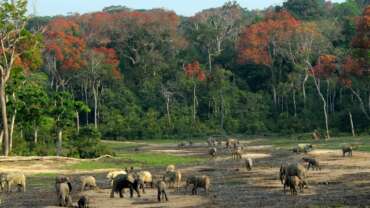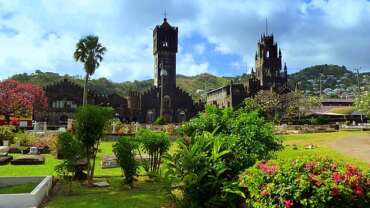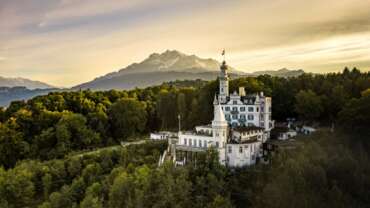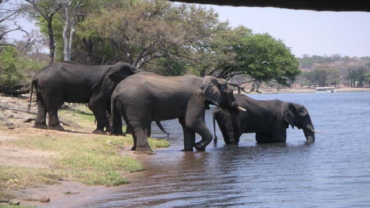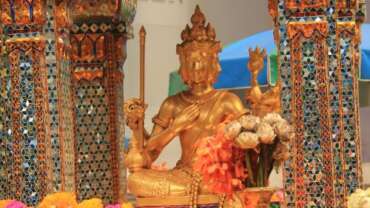Kyrgyzstan - Land of Celestial Mountains
Kyrgyzstan, officially the Kyrgyz Republic, also known as Kirghizia, is a landlocked country in Central Asia. It is bordered by Kazakhstan, Uzbekistan, Tajikistan and China. Its capital and largest city is Bishkek. Kyrgyzstan’s history spans a variety of cultures and empires.
Land Of Celestial Mountains
It’s impossible to imagine the history and culture of the Kyrgyz without Tien Shan and Pamir mountain ranges. Visit Kyrgyzstan, the land of celestial mountains, to get to know about the true nomadic lifestyle and unveil the real spirit of freedom and happiness.
Untouched Nature
Pristine valleys. Crystal clear mountain lakes. Powerful mountain rivers. Rich flora and fauna embracing rare species. Discover the virgin nature of Kyrgyzstan!
Great Silk Road
The current territory of Kyrgyzstan served as the main bridge on the giant trade route connecting the East and West. Some routes are still used in the country as highways. By visiting the historical sites along the route of the Great Silk Road, one can delve into the past and feel the spirit of antiquity and the middle ages.
History of Kyrgyzstan
Early history
Kyrgyz history can be traced at least to the 1st century BCE. The probable abodes of the early Kyrgyz were in the upper Yenisey River valley of central Siberia, and the Tashtyk culture (1st century BCE–5th century CE), an amalgam of Asiatic and European peoples, may have been theirs. Chinese and Muslim sources of the 7th–12th century CE describe the Kyrgyz as red-haired with fair complexion and green (blue) eyes. They were viewed as a forest-dwelling “northern” people who used skis and practiced shamanism. In the mid-9th century the Kyrgyz, by then certainly Turkic-speaking, overthrew the Uighur empire in Mongolia but did not settle there; they essentially remained a people of the forest. According to the Persian geography Ḥudūd al-ʿĀlam (982), the Kyrgyz lived at the edge of the “Uninhabited Lands of the North”; the 11th-century grammarian Maḥmūd al-Kāshgharī mentions that their language was Turkic. Because of their secluded habitats, the Kyrgyz remained outside the mainstream of Inner Asian history, a fact that allowed them to survive the Mongol deluge that completely altered the Inner Asian political landscape. In 1207 the Kyrgyz surrendered to Genghis Khan’s son Jöchi. By so doing, they not only escaped destruction but also remained beyond the immediate reach of Islam. In the late 16th century shamanism was still flourishing among them.
By the 16th–17th century most of the remaining Kyrgyz tribes lived in the Tien Shan range as mountain nomads, divided into two wings (left and right), though the advancing Russians still encountered remnants of the Yenisey branch of the Kyrgyz. In 1703, under pressure from the Dzungars (a tribe of western Mongols), the Yenisey Kyrgyz moved to the Semirechye, but hostilities between the two peoples continued until China’s defeat of the Dzungar leader Amursana in 1757. In the mid-18th century, nominally at least, the Kyrgyz became part of the Qing (Manchu) empire of China. Between 1825 and 1830 they were conquered by Muhammad ʿAli, the khan of Kokand; Bishkek (Pishpek), the future capital city of the Kyrgyz, was built by that khanate. Through these contacts, Islam was gradually adopted by the more-southern Kyrgyz, although it has remained merely a veneer on the national culture.
Russian and Soviet rule
Between 1835 and 1858 two Tien Shan Kyrgyz tribes, the Sarybagysh and the Bugu, engaged in a fratricidal war in which both sides alternately sought and obtained Kokandian or Russian help. In 1855 the Bugu voluntarily submitted to the Russians, and it was at their request that the Russians built the fort of Aksu in 1863.
The Kyrgyz tribes thus entered the modern era divided, harassed by Russians and Kokandians alike. The periodic revolts of the southern Kyrgyz against the Kokand khanate in the mid-19th century received no Russian support. But Russian immigration into Kyrgyz territories, rather than warfare, posed the real threat to Kyrgyz existence. Poor Russian peasants escaping from servitude and famine appropriated the winter pasturelands of the Kyrgyz, forcing them to move into the mountains. The Russian colonists did teach the Kyrgyz some new agricultural techniques, but on the whole their impact was nothing short of disastrous. In 1916 Kyrgyz discontent erupted in a serious revolt, which was met with brutal and prolonged repression that continued even after the fall of Russia’s tsarist regime.
Under Soviet rule the Kyrgyz found it difficult to assert themselves as a separate national entity. Confusion concerning their very name persists in the West because, under the tsars, the Kyrgyz were wrongly labeled Kara-Kirgiz in order to distinguish them from the Kazakhs, whom the Russians called Kirgiz to distinguish them from the Cossacks (Russian: Kazaky). In 1924 an autonomous Kirgiz oblast (province) was created within the Russian Soviet Federated Socialist Republic. In 1926 its status was transformed into that of an autonomous republic, and in 1936 a full union republic was created, the Kirgiz Soviet Socialist Republic, often called Kirgiziya.
In the second half of the 20th century, economic progress and general modernization did not succeed in eradicating tensions between Russians and Kyrgyz. Among the Central Asian republics of the former Soviet Union, Kyrgyzstan was perhaps the most eager to obtain full independence. After more than 1,000 years of disunity, statelessness, and foreign subjection, Kyrgyzstan joined the world’s independent countries on August 31, 1991.
Independent Kyrgyzstan
Early independence and the presidency of Askar Akayev
Under President Askar Akayev, Kyrgyzstan developed all the institutions of a modern democracy, including an open press, an independent judiciary, and a freely elected parliament. Yet the new country experienced numerous challenges. Kyrgyzstan saw a sharp economic decline beginning in the mid-1990s, in part because of a shortage of raw materials and the emigration of many Russian and German professionals. Moreover, Akayev’s government was accused of widespread corruption, and the president was denounced for abusing his power. The press, though ostensibly free, was subject to official intimidation and, from 1995, to a series of state regulations.
The country’s main external threat was the infiltration of large numbers of Islamist guerrillas moving between Afghanistan and Uzbekistan. In 2001 the government granted U.S. and allied forces the right to establish a base at Manas to conduct operations against the Taliban and al-Qaeda in Afghanistan. A Russian air base was established in Kyrgyzstan in 2003 to support a Commonwealth of Independent States (CIS) rapid reaction force intended to defend CIS countries from Islamist guerrillas. The lease with Russia was renewed in 2012 for a 15-year extension while in 2013 the Kyrgyz parliament voted overwhelmingly to end the U.S. lease. U.S. forces withdrew from the base in July 2014.
The Tulip Revolution and the presidency of Kurmanbek Bakiyev
Flawed parliamentary elections in 2005 and a widespread perception of government corruption led to mass demonstrations in March of that year. The “Tulip Revolution,” quite surprisingly, led to the sudden and rapid collapse of the Akayev government. The president fled the country on March 24 and resigned several days later. In July elections, which were largely deemed free and fair by Western observers, Kurmanbek Bakiyev was chosen president.
The period following Bakiyev’s election was marked by political instability as the new president worked to assert his authority. Although Bakiyev employed a number of authoritarian practices to consolidate his power—including undermining the opposition and promoting associates and relatives to important posts—he neither achieved full authority nor moved Kyrgyz politics firmly into authoritarianism. Bakiyev faced emerging criticism on a number of key issues, however, including a perceived increase in corruption, which had been a central factor leading to the demonstrations against the government he had been elected to replace. In addition, the parliament installed under Akayev by the flawed elections of 2005 remained a locus of political instability, and Bakiyev’s failure to hold new parliamentary elections was widely criticized.
In October 2007 a referendum proposing a new code of electoral law and a series of significant constitutional changes was overwhelmingly approved in an election criticized by observers for its failure to meet international standards. The referendum increased the number of seats in parliament and provided for their allotment on the basis of party lists rather than individual candidacy; this was widely seen as a move by Bakiyev to bolster his newly formed Ak Zhol party and further undermine the opposition. The referendum also granted the president the right to dissolve the government at will. Bakiyev accordingly did so immediately following the announcement of the referendum results and called for early elections, which were held in December. Ak Zhol won the majority of the seats, controlling nearly four-fifths of the newly expanded Kyrgyz parliament. Although Bakiyev lauded the election proceedings, both local and international observers expressed concern about reports of widespread violations, including purchased votes and the elimination of opposition candidates from the election.
As Bakiyev’s term progressed, opposition figures accused him of intimidation and a dwindling tolerance for dissent. In the period leading up to the presidential election of 2009, in which Bakiyev sought reelection, attacks on journalists were perpetrated with increasing frequency and were criticized by observers as an attempt to stifle dissent. The election was held on July 23, 2009, and, as voting progressed, Bakiyev’s main challenger alleged widespread electoral fraud and effectively withdrew himself from the race before the polls had even closed. Official election results credited Bakiyev with a landslide victory of more than three-fourths of the vote, although international observers likewise expressed concerns with the conduct of the election.
Protest against Bakiyev’s increasingly authoritarian policies and accusations of corruption both played a role in the outbreak of violent unrest in April 2010, but the more immediate cause appeared to be a steep increase in the cost of utilities. In early April, thousands of protesters attempted to storm the main government building in Bishkek in an apparent effort to overthrow the government. Failing to disperse the crowds with tear gas and stun grenades, riot police fired with live ammunition, killing some 80 people and wounding hundreds more. On April 7 the Kyrgyz government declared a state of emergency in response to the unrest as simultaneous demonstrations broke out in Naryn, Tokmak, and Talas, where protesters seized government offices. By the early hours of April 8, Bakiyev had fled the capital by plane, and the opposition had announced the formation of an interim government.
Although he issued statements condemning the events, Bakiyev’s precise whereabouts were unclear until several days later, when he emerged near Jalal-Abad, farther south. Meanwhile, the opposition, led by former foreign minister Roza Otunbayeva, worked to consolidate its hold on power, replacing government officials in numerous positions and holding conversations with U.S. and Russian leaders. Although Bakiyev initially insisted that he retained popular support and would not step down, the opposition claimed to have received his resignation, and on April 15 Bakiyev departed Kyrgyzstan, leaving the country in the hands of the interim government with Otunbayeva serving as president. Several days later, however, from exile in Belarus, Bakiyev denied having resigned and insisted that he was still in fact the country’s legitimate president. Meanwhile, as looting and unrest sparked by the political conflict continued, the interim government authorized the use of deadly force to restore order.
Almost two months after the transfer of power, ethnic violence between the Kyrgyz majority and the Uzbek minority erupted in the south of the country, particularly in and around Osh. With the interim government unable to bring the region under its control, this outbreak of violence resulted in the deaths of scores of Uzbeks and a smaller number of Kyrgyz, as well as the dislocation of hundreds of thousands. Reports also alleged that atrocities had been committed by Kyrgyz troops, suggesting that the military was not fully under government control. The interim government did not immediately respond to these allegations and instead accused Bakiyev of fomenting the unrest. Meanwhile, Uzbeks claimed zones of autonomy in the south and refused to account to the central government, threatening to fracture the country.
Although the violence had cast into doubt the ability of the interim government to hold a scheduled referendum on a new constitution, in late June the vote took place as planned. The new constitution was approved by some 90 percent of voters in an election international observers held to be free and fair.
People of Kyrgyzstan
Ethnic groups
The Kyrgyz, formerly a transhumant (nomadic) people, were settled into collectivized agriculture by the Soviet regime. Besides Kyrgyz, the country’s population includes minorities of Russians, Uzbeks, Ukrainians, and Germans (exiled to the region from European parts of the Soviet Union in 1941), as well as Tatars, Kazakhs, Dungans (Hui; Chinese Muslims), Uighurs, and Tajiks. Since independence in 1991, many Russians and Germans have emigrated. Nearly three-fourths of the population is Kyrgyz, while about one-seventh is Uzbek. The other ethnic groups make up the remaining one-eighth of the population.
Languages
Most Kyrgyz speak a language belonging to the northwestern group of the Turkic languages, especially Kyrgyz. A sizeable minority speak Uzbek, a Turkic language of the southeastern branch. Russian is also spoken, and official language status has been accorded to both Kyrgyz and Russian.
Cultural Life of Kyrgyzstan
Cultural Life
Starting in the 1920s and ’30s, several Kyrgyz-language newspapers appeared regularly in the republic, but they were subject to Soviet censorship. With the collapse of Moscow’s control over the press, the editorial policies of the republic’s publications have changed noticeably, and new press outlets have appeared, though press freedom has occasionally been curtailed. Kyrgyzstan has a television network, extensive radio broadcasting, cinemas, and theatres. Kyrgyz cultural life has been greatly influenced by the rich oral literary tradition (including epic cycles and lyric poetry) of the region, by the development of a modern literary language, and by the change from the Arabic alphabet to Roman and finally to Cyrillic (with diacritical markings added) beginning in 1940. The Kyrgyz planned a return to the Roman alphabet in the 1990s, in concert with the other Turkic-speaking countries of Central Asia. Kyrgyz folk singers still recite the lengthy verse epic Manas and other heroic and lyric poetry, often to the accompaniment of the three-stringed komuz, which is plucked like a lute.
During the Soviet period Kyrgyz poets strove to adjust their writings to communist ideology and the tenets of Socialist Realism. But the character of Kyrgyz cultural life has undergone considerable change in the wake of the dissolution of the Communist Party and the cessation of its tight ideological controls.
The Kyrgyz take pride in the renown of Chingiz Aytmatov, a novelist and storywriter who wrote mainly in Russian but also in Kyrgyz. His Povesti gor i stepey (1963; Tales of Mountains and Steppes) and the more recent I dol’she veka dlit’sia den’ (1980; The Day Lasts More than a Hundred Years) and Plakha (1986; The Place of the Skull) have received wide circulation in Russian and in English translations. Aytmatov’s play Voskhozhdenie na Fudziiamu (1973; The Ascent of Mt. Fuji), written with Kazakh playwright Kaltay Muhamedjanov, discusses rather openly the moral compromises made under the Soviet leader Joseph Stalin. This play created a sensation when it was first staged in Moscow in 1973 and later in English-language productions abroad.
State-sponsored folk dance troupes, a theatre of opera and ballet, and the Kyrgyzstan Philharmonic Orchestra perform in concert halls and theatre buildings erected during the Soviet period. The Museum of History and the Arts is located in Bishkek.
Nomadic Lifestyle
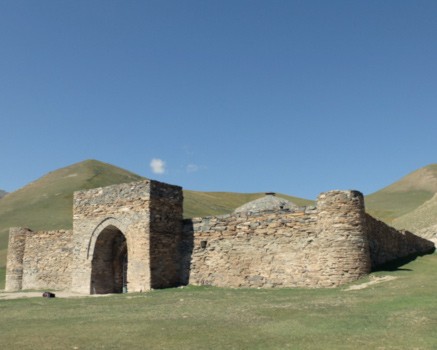
The Kyrgyz have been traditionally nomadic people up until the second quarter of the 20th century. Today Kyrgyzstan is one of the few countries where a certain part of the population still practices a semi-nomadic lifestyle. Welcome to Kyrgyzstan to learn how to set up a traditional nomad’s house bozui, what the taste of koumiss feels like and the process of making it, how kyrgyz nomads lived in the past and how they live on summer pastures today.
Rich Heritage
The Kyrgyz have preserved rich and diverse cultural heritage for centuries. Visit Kyrgyzstan to learn more about kyrgyz folklore, on the top of which comes the Epic of Manas, novels by famous kyrgyz writer Chyngyz Aitmatov, spectacular and entertaining national games and kyrgyz handcrafts.





